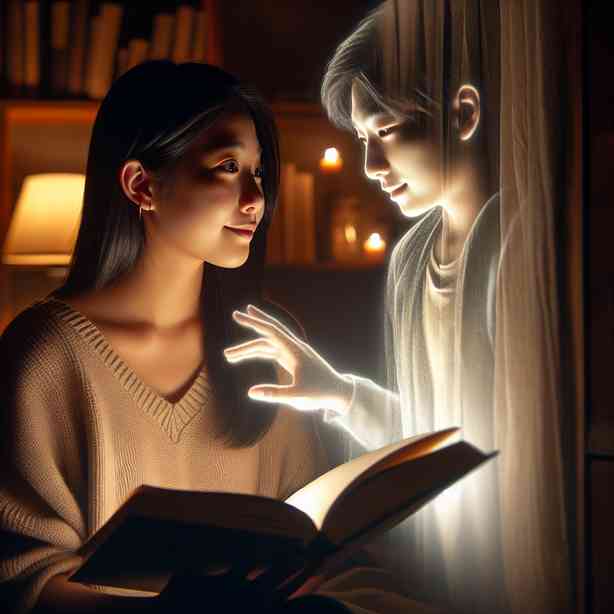
When we dive into the world of storytelling, be it through novels, films, or games, we often encounter characters that resonate with us on a personal level. These characters can feel so familiar and relatable that they seem to become friends. The phenomenon of character attachment is complex and multifaceted, rooted in our psychological makeup and emotional experiences.
Characters that feel like friends often share traits or experiences that mirror our own lives, providing comfort and companionship through the stories they inhabit. This sense of familiarity can arise from various factors, including narrative depth, character development, and emotional connection.
Firstly, let us explore the importance of character development in fostering this bond. Well-developed characters are multi-dimensional; they possess quirks, flaws, and virtues that make them relatable. Consider the characters we often gravitate towards—those who overcome challenges, navigate relationships, and experience growth. Such characters allow us to see parts of ourselves reflected in their journeys. It’s not just about high-flying heroes; often, it’s the everyday struggles of characters that strike a chord.
The nature of their challenges plays a significant role in this connection as well. Characters who go through trials and tribulations offer us a lens through which we can explore our own feelings and experiences. When a character faces loss, love, or self-discovery, it resonates with our own life’s trials, creating a sense of empathy and understanding. This connection deepens our attachment, as we cheer for their triumphs and mourn their losses as if they were friends of our own.
In addition to character development, the narrative itself serves as a crucial element in establishing this friendship. Stories that engage our emotions or challenge our perspectives create immersive experiences. When we imbue ourselves in the narrative, we become more invested in the characters’ lives and stories. It’s as though we step into their shoes, experiencing the highs and lows of their adventures alongside them. This participatory engagement fosters a sense of companionship, one that often lingers long after the story concludes.
Moreover, certain storytelling techniques, such as inner monologues and dialogues, can enhance the connection. When a character articulates their thoughts and feelings, we gain insight into their inner worlds. This revelation fosters intimacy, making us feel as though we are privy to their thoughts, fears, and desires. Through this transparency, characters become accessible; they become friends who allow us to glimpse their vulnerabilities.
The emotional connections that develop don’t merely arise from shared experiences; they are also cultivated through moments of interaction. A character’s kindness or bravery, their small acts of rebellion or moments of introspection, can resonate deeply with us. We often find ourselves rooting for characters during intense moments, or sharing in their joy during happier occasions. This emotional investment makes them feel like friends, companions walking alongside us in the journey of life, even if they exist solely in the realm of fiction.
Furthermore, the context in which we experience these stories can impact our bond with characters. The time and space we inhabit while engaging with a narrative can amplify our emotional response. For example, during challenging periods in our lives, we may turn to characters that embody resilience, hope, or love. In these moments, those characters can serve as beacons of light, guiding us through our own trials. They don’t just tell a story; they become part of our own narrative, standing beside us as friends offering solace.
Cultural nuances also influence how we connect with characters. Characters that bridge cultural gaps or represent diverse backgrounds allow us to expand our worldview. They serve as conduits through which we can explore different perspectives, struggles, and triumphs. In essence, they challenge us to empathize with experiences outside of our own. As we engage with them, we open ourselves to a broader understanding of humanity, enhancing the richness of our connection.
On the flip side, characters that embody values or ideals contrary to our own may offer a different kind of connection. They challenge us to confront our beliefs and assumptions, fostering growth and reflection. These characters may not always be likable, but their complexity invites us to engage in meaningful dialogues with ourselves. In many ways, they can become friends who challenge us to think deeper, pushing us to see not just the surface but the intricate layers of human experience.
As we reflect on the nature of these friendships with characters, it’s important to recognize the role of the audience. Each of us brings our unique experiences, emotions, and perceptions to the stories we consume. Our backgrounds and personal histories influence how we relate to characters, shaping the depth of our connection. Some might find solace in characters who mirror their own lives, while others may seek inspiration from those whose lives diverge greatly from theirs.
The beauty of storytelling lies in its universality; it allows for endless interpretations and connections. Characters that resonate with us are a testament to the power of narrative, reminding us of our own journeys. They become companions, offering insights into our own lives while inviting us to explore new worlds and experiences.
In conclusion, the phenomenon of characters feeling like friends is a rich tapestry woven with threads of relatability, emotional connection, narrative depth, cultural nuances, and personal experiences. They serve as reflections of ourselves, helping us navigate the complexities of our emotions and experiences. Whether through their triumphs, struggles, or unique personalities, these characters illuminate the intricacies of the human experience, ensuring that even in the realm of fiction, we are never truly alone.
So the next time you find yourself captivated by a character, take a moment to appreciate the bond that has formed. Recognize the friendship that exists between you and these fictional companions, for they are not just figments of imagination; they are reflections of the many facets of our humanity. They remind us of our shared experiences, our hopes, and our dreams, echoing the beautiful truth that we are all connected through stories.


